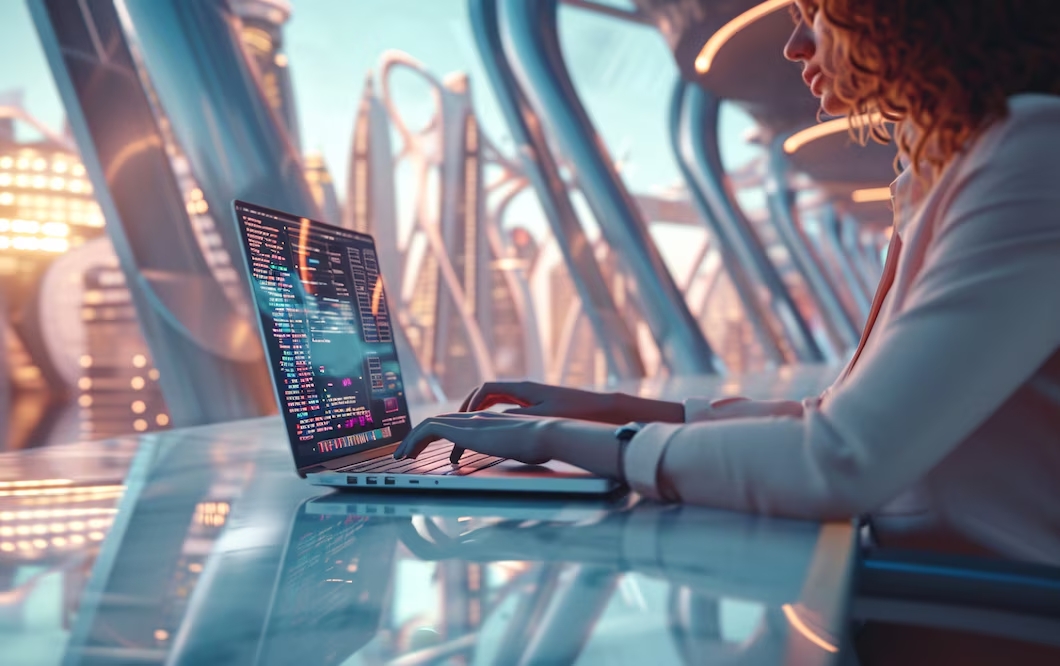Dubai, known for its rapid development and technological advancements, has seen remarkable changes in web design over the past two decades. From the early 2000s to 2024, the evolution of web design in Dubai reflects broader global trends while also embracing unique local characteristics.
This article delves into how web design in Dubai has evolved, highlighting key trends and developments along the way.
Early 2000s: The Dawn of Web Design in Dubai
In the early 2000s, Dubai was just beginning to embrace the digital age. Web design during this period was characterized by basic HTML pages, simple layouts, and minimal graphics. Websites often feature static content with limited interactivity. The focus was on creating an online presence rather than providing a sophisticated user experience.
1. Basic Layouts and HTML
During this era, many websites in Dubai were built using basic HTML, which limited the design possibilities. Websites often had straightforward layouts with minimal graphics and color schemes. The primary goal was to get online and provide basic information about businesses.
2. Development of Flash and Animation
As technology advanced, Flash became popular for adding animations and interactive elements to websites. This period saw an increase in the use of flashy animations and multimedia content. While Flash added visual appeal, it also introduced compatibility issues and slower loading times.
3. Initial Efforts at Branding
Early web design efforts in Dubai began to focus on establishing brand identities online. Companies started to recognize the importance of consistent branding and began incorporating logos and color schemes into their websites. However, branding efforts were still in their infancy, and many sites lacked cohesive visual identities.
2010s: The Rise of Modern Web Design Practices
The 2010s marked a significant shift in web design in Dubai, with the introduction of modern design practices and technologies. The emphasis moved towards creating user-friendly, visually appealing, and interactive websites.
4. Introduction of CSS and Responsive Design
The introduction of CSS (Cascading Style Sheets) allowed for more flexible and visually appealing designs. Websites became more dynamic, with better control over layout and styling. Responsive design emerged as a key trend, ensuring that websites looked good on various devices, including desktops, tablets, and smartphones.
5. Focus on User Experience (UX)
During this decade, the focus shifted towards enhancing user experience (UX). Designers in Dubai began to prioritize user-friendly navigation, faster load times, and intuitive interfaces. Websites were designed to be more engaging and accessible, with a focus on providing a positive experience for users.
6. Mobile-First Approach
With the rise of smartphones, the mobile-first approach became increasingly important. Designers started creating websites optimized for mobile devices, ensuring that users had a seamless experience regardless of the device they were using. This shift was crucial in Dubai, where mobile internet usage was rapidly increasing.
7. Integration of Social Media
Social media integration became a key feature of web design in Dubai during the 2010s. Websites began to incorporate social media buttons, feeds, and sharing options, allowing users to connect with brands and share content easily. This integration helped businesses engage with their audience and expand their online presence.
2020s: The Era of Advanced Web Design Trends
As we moved into the 2020s, web design in Dubai continued to evolve, incorporating advanced technologies and trends. The emphasis on creating immersive and interactive experiences grew, reflecting the city’s commitment to innovation.
8. Adopting Minimalism
Minimalist design became a prominent trend, focusing on clean, uncluttered layouts with ample white space. This approach enhanced user experience by making websites easier to navigate and more visually appealing. In Dubai, where design aesthetics are highly valued, minimalist design has become a popular choice for modern websites.
9. Implementation of AI and Chatbots
The integration of artificial intelligence (AI) and chatbots revolutionized customer interactions on websites. AI-powered chatbots provide instant support and personalized experiences, improving user engagement and satisfaction. Businesses in Dubai began to leverage these technologies to enhance customer service and streamline interactions.
10. Rise of Voice Search and Conversational UI
Voice search and conversational user interfaces (UI) gained traction as technology advanced. Websites started incorporating voice search functionality and conversational elements to accommodate users who preferred voice interactions. This trend reflected the growing influence of voice assistants and AI in daily life.
11. Improved Security and Privacy Features
With increasing concerns about online security and privacy, web design in Dubai placed a stronger emphasis on incorporating robust security features. Websites adopted SSL certificates, secure payment gateways, and privacy policies to protect user data and build trust.
12. Focus on Sustainability and Eco-Friendly Design
Sustainability became an important consideration in web design, with a growing focus on eco-friendly practices. Designers in Dubai started adopting green hosting solutions and optimizing websites to reduce energy consumption. This trend reflected a broader global awareness of environmental impact.
Conclusion
The evolution of web design in Dubai from 2000 to 2024 highlights the city’s adaptation to global trends and its embrace of technological advancements. From basic HTML layouts to advanced AI integrations and minimalist designs, Dubai’s web design landscape has undergone significant changes.
For businesses looking to stay ahead in this dynamic environment, RedSpider Web & Art Design offers cutting-edge solutions that reflect the latest trends and innovations in web design in Dubai. Investing in modern web design not only enhances user experience but also positions businesses for continued success in a rapidly evolving digital world.

